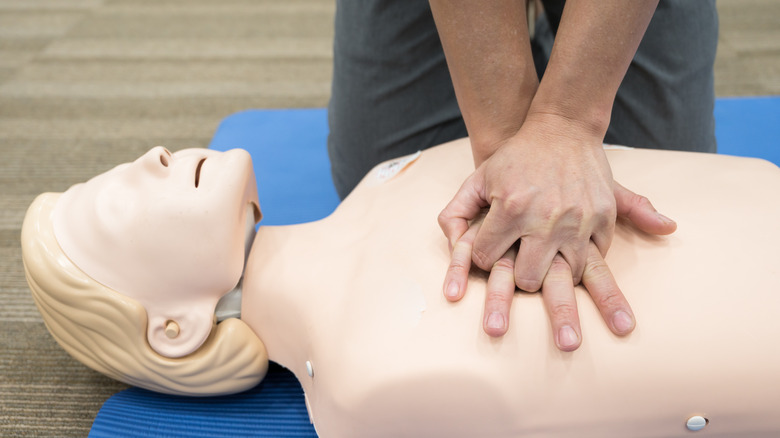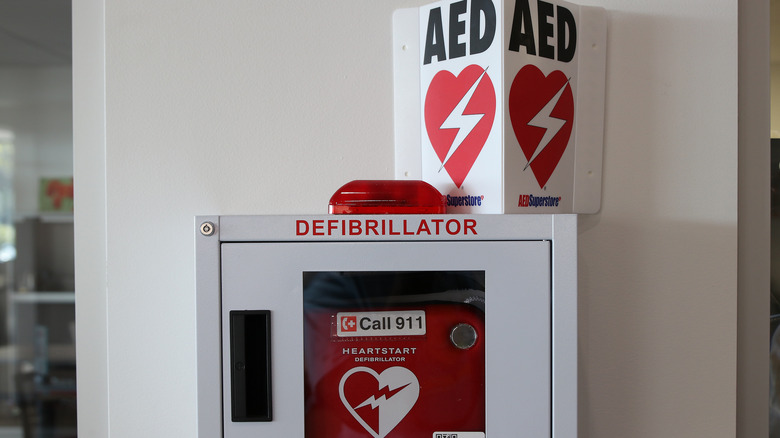What To Do If You Need To Give Somebody CPR
One of the main predictors of survival for people who go into sudden cardiac arrest is how quickly they are administered cardiopulmonary resuscitation (CPR). Almost 600,000 people experience cardiac arrest every year in the United States, and only about 200,000 of those happen in a hospital setting (via Centers for Disease Control). As such, knowing CPR and performing it correctly can make the difference between life and death for someone experiencing cardiac arrest.
Cardiac arrest occurs when the heart starts beating erratically and then suddenly stops. When the body's electrical system misfires, the heart can start beating irregularly (via Medline Plus). If the heart can no longer pump blood and stops completely, the first symptom will be a sudden loss of consciousness.
You will know when someone is in cardiac arrest if they do not have a heartbeat. If someone is unresponsive, gasping for air, or not breathing at all, it is crucial to begin life-saving treatments like CPR immediately (via CDC). If you see someone losing consciousness, the first thing you can do is ask them if they need help (via American Red Cross). If they don't respond, quickly identify one person nearby and tell them to call 911 right away. By asking a single person directly to do this task, you avoid the possibility that no one will take action because everyone assumes someone else will make the call. If you are alone, call 911 yourself.
You don't need formal CPR training to help
If there is an Automated External Defibrillator (AED) nearby, you or a bystander should get it and follow the directions on the AED to administer electrical shocks to the victim and attempt to restart the heart rhythm. In the absence of an AED, the next best thing you can do is start chest compressions. The two major organizations that teach CPR training in the United States, the American Red Cross (ARC) and the American Heart Association (AHA), differ slightly in their approach to CPR. But research has shown that the compression-only technique taught by the AHA is just as effective as the combination of breathing and chest compressions taught by the ARC.
To begin CPR, the AHA recommends pushing down hard and fast on the center of the chest with both hands, at a rate of about 100 to 120 beats per minute. That's about as fast as the beat to "Crazy in Love" by Beyoncé or "Walk the Line" by Johnny Cash. Keep doing compressions until more help arrives. Remember that even if you've never taken a CPR class, you can still follow these steps to take action and help save a life. By starting CPR as quickly as possible, you can increase the survival chances of a person experiencing sudden cardiac arrest.


